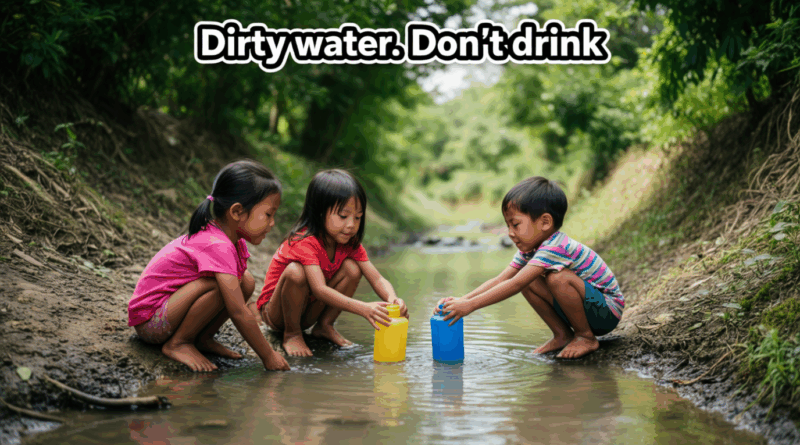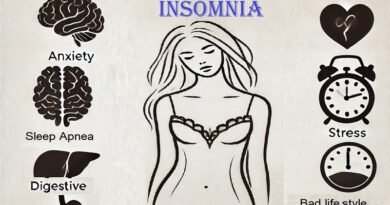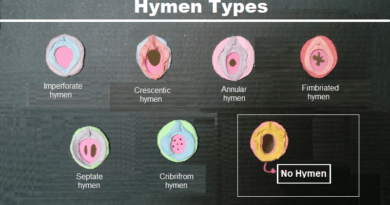Waterborne Diseases After Floods: Cholera, Typhoid, and Diarrhea in the Philippines
Last Updated on 10/30/2025 by Helal Medical
Introduction
Every year, floods in the Philippines cause not only property damage but also serious public health emergencies. Flooding often leads to the rise of waterborne diseases. These are infections that spread through contaminated water and food.
During the rainy season, these diseases become prevalent in both rural and urban areas. This includes cholera, typhoid fever, and acute diarrhea. Contaminated floodwater often mixes with drinking supplies, sewage, and household waste, creating a dangerous environment for disease transmission.
Understanding how to prevent and manage waterborne diseases after floods is vital to protecting your family’s health.
Why Floods Lead to Waterborne Diseases
When floodwaters enter communities, they often carry bacteria, viruses, and parasites from sewage systems, garbage dumps, and animal waste. This contamination can spread rapidly, especially when:
- Clean water sources are damaged or polluted.
- People are forced to use untreated water for drinking and cooking.
- Food storage and sanitation systems break down.
Flooding also leads to displacement and overcrowding in evacuation centers, making it difficult to maintain proper hygiene. These conditions create the perfect storm for outbreaks of waterborne illnesses.
1. Cholera: Rapid Dehydration and Danger
Cholera is one of the most severe waterborne diseases, caused by the bacterium Vibrio cholerae. It spreads through water or food contaminated with feces.
Symptoms:
- Profuse watery diarrhea (“rice water” stools)
- Vomiting
- Leg cramps
- Rapid dehydration
- Low blood pressure and shock (in severe cases)
How It Spreads:
Cholera bacteria multiply quickly in contaminated water. People become infected by drinking unboiled water, eating uncooked food, or using dirty utensils.
Prevention Tips:
- Boil water for at least 3 minutes before drinking.
- Wash hands with soap and clean water before eating or preparing food.
- Avoid raw seafood and street food after floods.
- Dispose of waste properly and keep toilets clean.
Treatment:
Cholera requires immediate rehydration. Use Oral Rehydration Solution (ORS) or fluids with salt and sugar. Severe cases need intravenous (IV) fluids and antibiotics prescribed by a doctor.
Visit the Department of Health (DOH) for current advisories on cholera prevention in flood-prone areas.
2. Typhoid Fever: A Common Post-Flood Infection
Typhoid fever, caused by Salmonella typhi, spreads through contaminated water, food, or direct contact with an infected person. In the Philippines, it is one of the most common diseases during and after floods.
Symptoms:
- High fever lasting more than 5 days
- Weakness and fatigue
- Abdominal pain
- Constipation or diarrhea
- Headache and loss of appetite
How It Spreads:
Flooding often contaminates wells and storage tanks. People become infected when they drink or cook using this water. Food handlers who don’t wash their hands properly can also spread the bacteria.
Prevention Tips:
- Drink only boiled or bottled water.
- Wash fruits and vegetables thoroughly.
- Cook all food thoroughly and avoid eating leftovers without reheating.
- Practice hand-washing with soap and clean water.
- Avoid direct contact with sewage or floodwater.
Treatment:
Typhoid fever is treated with antibiotics (such as ciprofloxacin or azithromycin), rest, and hydration. Severe cases need hospitalization.
Vaccination is available and recommended for people in high-risk areas. Consult your local health center for advice.
3. Acute Diarrhea: A Widespread Post-Flood Problem
Acute diarrhea is one of the first signs of waterborne contamination after floods. It can be caused by various organisms — bacteria, viruses, or parasites — often linked to unclean food or water.
Symptoms:
- Frequent loose stools
- Abdominal cramps
- Nausea and vomiting
- Fever (in some cases)
- Signs of dehydration (dry mouth, sunken eyes, weakness)
Prevention Tips:
- Drink only safe, boiled, or chlorinated water.
- Avoid drinks made with ice of unknown origin.
- Ensure baby feeding bottles are sterilized properly.
- Promote breastfeeding for infants, as it reduces infection risk.
Treatment:
Most diarrhea cases can be treated at home with ORS and adequate hydration. However, persistent or bloody diarrhea requires medical attention to rule out cholera or dysentery.
How to Keep Drinking Water Safe After Floods
Maintaining clean water is crucial for preventing waterborne diseases. Here are essential steps:
- Boil Water Properly
- Bring water to a rolling boil for at least 3 minutes.
- Allow it to cool before storing in clean, covered containers.
- Use Water Purification Tablets
- If boiling is not possible, use purification tablets according to package instructions.
- Disinfect Water with Bleach
- Mix 2 drops of household bleach per liter of water.
- Let it stand for 30 minutes before use.
- Clean Water Containers Regularly
- Wash storage drums, bottles, and buckets with soap and water.
- Keep them covered to prevent contamination by insects or debris.
- Avoid Using Floodwater for Any Domestic Purpose
- Even for cleaning, floodwater may contain pathogens that cause infections.
Hygiene Practices to Prevent Disease Outbreaks
Maintaining good hygiene is as important as clean water. After floods:
- Wash hands more often with soap and clean water.
- Keep nails trimmed and clean.
- Use separate utensils for raw and cooked food.
- Dispose of waste properly — never near water sources.
- Clean toilets and bathing areas with disinfectant regularly.
Evacuation centers must give clean toilets, hand-washing facilities, and separate waste disposal areas to reduce disease spread.
The Role of the Government and Health Organizations
The Philippine Department of Health (DOH) regularly monitors outbreaks of cholera, typhoid, and other waterborne diseases. They do this in coordination with the Philippine Red Cross and the World Health Organization (WHO). This monitoring occurs after flooding events.
They provide:
- Free ORS and medical consultations in affected areas
- Health advisories on safe water and sanitation
- Vaccination drives in flood-prone regions
For real-time updates and health alerts, visit:
When to Seek Medical Attention
You should seek immediate medical help if:
- Diarrhea lasts more than 3 days or worsens.
- You notice blood in stool or vomit.
- Fever persists despite medication.
- You or your child show signs of dehydration (dry mouth, little urine, drowsiness).
Early treatment saves lives and prevents outbreaks.
Conclusion: Clean Water, Healthy Communities
Floods are unavoidable in the Philippines, but waterborne diseases don’t have to be. By ensuring safe drinking water, practicing proper sanitation, and staying vigilant, families can protect themselves from cholera, typhoid, and diarrhea.
Community cooperation and government support play vital roles in maintaining public health during the rainy season. Prevention begins at home — one clean glass of water at a time.
📞 If you or your family experience persistent diarrhea, fever, or dehydration after flood exposure, seek medical care.
Contact Helal Medical for professional consultation and safe treatment. Get guidance on protecting your family from waterborne diseases after floods in the Philippines.
Discover more from Helal Medical Manila
Subscribe to get the latest posts sent to your email.




